If you enjoy my Instagram posts and would like to buy a print or a high resolution digital file, please send me a message at james@colorgrinder.com.
You might also like to take a look at some of my photo projects here
If you enjoy my Instagram posts and would like to buy a print or a high resolution digital file, please send me a message at james@colorgrinder.com.
You might also like to take a look at some of my photo projects here
My first attempt at shooting a video in the Chernobyl zone (January 2018) was not very well planned. I simply strapped my antabuse elderly GoPro 3 to my chest at let it run as I wandered around. I figured that I could just cut out the bad bits when I got back home. Actually there turned to be rather a lot of bad bits and when I had finished cutting them out I was left with about neurontin nine minutes of VERY wobbly video.
The next time I visited (January 2019) I was better prepared. I took a handheld Antabuse over the counter gimbal and shot the video on my Smartphone. It is amazing the difference that the stabilization makes. The final video is twenty three minutes long – very much on the upper limits of what close friends and family can be cajoled into getting lasix watching.
I started my centenary commemoration project prednisone generic in 2014 in Sarajevo where 100 years earlier Gavrillo Princip’s assassination of Archduke Franz Ferdinand set off a chain reaction that resulted in the deaths of more than 20 million people from 32 countries. I followed the shock waves down to Gallipoli in 2015, the Somme in 2016, and Passchendaele in 2017. Now four years later I found myself standing in a muddy French field with my son David, at the site where the last of these hapless souls was shot. Henry Gunther, a twenty-three-year-old American of clomid online German extraction met his maker at 10:59, one measly minute before the cease fire came into force.
ambien
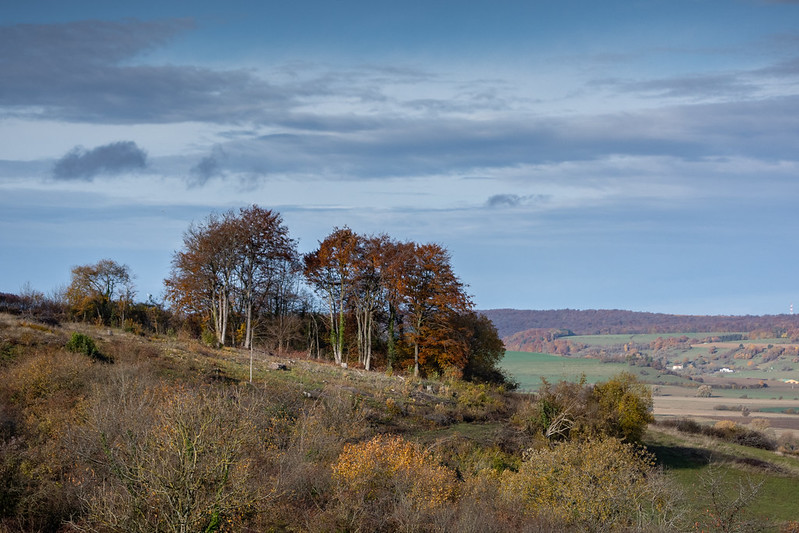
Fearing crowds and difficulties with parking we had set off bright and early from our overnight stop in Luxembourg. As it turned out there were neither crowds nor parking problems and we arrived in Chaumont-devant-Damvillers with about an hour and a half to spare. The momument is a stiff ten minute walk uphill to the north of the village and at the monument that marks the spot where Gunther fell we met Paul Juckett from Cornwall who had been doing rather more walking than we had. He had started in Paris and had made it here pretty much on foot, visiting many of the western front battlefields and raising money for charity in the process.
ambien get
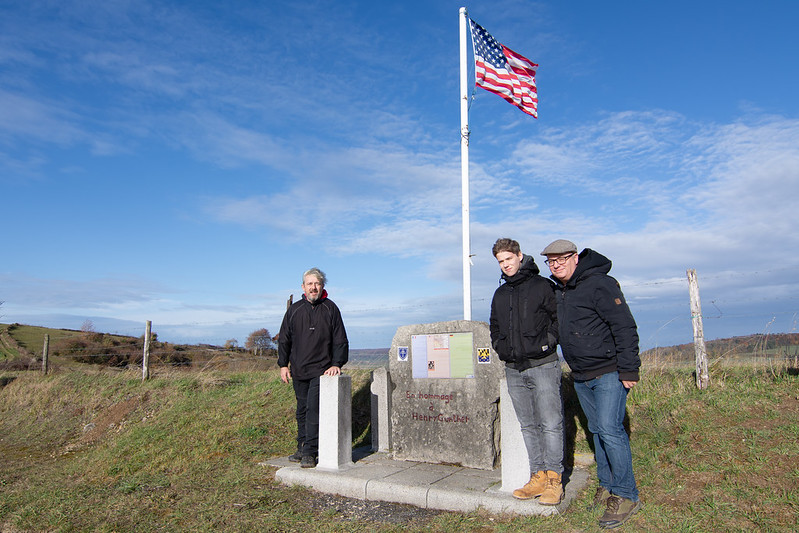
The armistice itself was agreed at around 5 am in a railway siding in the forest of Compiègne some 60 km north of Paris. In the six hours following the signature the news propagated through the front that fighting would cease at exactly 11:00 – the eleventh hour of the eleventh day of the eleventh month.
Gunther was a latecomer to the European battlefields, having arrived in September of 1918. He quickly fell foul of the authorities by writing to a pal back in the USA informing him of the dreadful conditions at the front and urging him to avoid being drafted at all costs. The censor took a dim view of this advice and Gunther was promptly demoted from sergeant to corporal. Something that he resented a great deal.
This morning it was very windy but dry and bright in Chaumont. One hundred years ago the weather was damp and very misty. Corporal Gunther and his brothers in arms, presumably fully aware of the impending cease fire, were advancing from Chaumont devant Damvillers (not much more than a church and half a dozen farm houses) with orders to take the German positions on the ridge to the north of the village. Gunther and his friend Sergeant Powell walked out of a fog bank to find themselves confronted with two German machine gun squads. As the Americans approached, their adversaries fired above their heads, Both soldiers hit the ground but ignoring the germans energetic waves and shouts that the war was over. Gunther got to his feet and continued towards the German positions. Finally (presumably muttering the German equivalent of “sod this for a game of soldiers”), one of the machine gunners let off a short burst of fire and propelled Gunther into the history books less than sixty seconds before the guns fell silent all across the western front.
It is hard to imagine what the soldiers who had made it to this point must have been feeling as the armistice took effect 100 years ago. Did they even know that the war was finally over? Did they celebrate with their former adversaries? The information board here at Gunther’s memorial mentions “scenes of fraternisation” but I suspect that the atmosphere between the two sides here on the ridge outside Chaumont was frosty to say the least.
As the centenary of the armistice approached a few more people joined us. There were several French families and a gentleman who had cycled along the ridge from Mangiennes. We had met him earlier that morning at the German military cemetery. By 10:59 there were thirteen of us all told gathered in front of the small monument that marks the place where Gunther fell. Paul had a wooden cross from the British Legion and a couple of the other visitors brought small bunches of flowers. I wondered whether someone was going to say a few words but no one did. There was no sign of royalty. Prince Charles was hot on my heels at Gallipoli, the Somme & Paschendaele but he hasn’t made it this time.
That’s it. All over. Nothing else to see here! You can read about my previous centenary visits HERE
Check out Paul Juckett’s blog HERE
A YouTube video dramatising the final futile moments of the war to end all wars is at https://youtu.be/U10ON2aau3g
By 1917 the war was into its fourth bloody year and the great armies of Europe neurontin online had ground to a miserable halt on the western front. The third battle of Ypres or “Passchendaele” as it came to be known, was an attempt by the allied forces to break this deadlock and to push through to the submarine bases on the channel coast. The battle lasted the better part of three months and saw the front move back and forth just a few costly kilometers. In 1917 Passchendaele was probably the most frightening place on earth (and frankly it had some stiff competition). It was the obvious choice for my 2017 WW1 centenary visit and so on July the 30th, the day before the centenary I pointed my car towards Belgium and met up with my old chums Neil, Julian Mark and MT.
getting prednisone
The market square in Ypres had been turned in to a massive theater for the evening. Airport style security checks were in place and from vantage points high above the square, tough looking men with balaclavas and guns looked out over the crowd.
We had some time to kill before things got going so we browsed gift shops full of books, shell cases and all sorts of poppy themed souvenirs.
Close to the Menin Gate we walked past celebrity historian Dan Snow who was on speakerphone having some facetime with his kids. It was quite sweet actually – the 21st century equivalent of the letters from Ypres that British visitors would have sent back to Blighty 100 years previously.
Every evening at 20:00 the road that passes through the Menin Gate is closed and a short ceremony of remembrance is held. Usually the famous verse of Laurence Binyon’s “For the fallen” is read out and the last post is sounded by members of the Ypres volunteer fire brigade. Sometimes a visiting school class, a boy scout troop, or a branch of the British Legion get to participate. The impressive thing though is that the ceremony goes ahead day after day, even on the dreary winter evenings when only a handful of visitors huddle to escape the worst of the wind and rain. Today was very different of course and actually the monument was out of bounds to the general public. We did get to watch the ceremony on large video screens in the market square as Prince William and his lovely wife laid wreaths alongside the King and Queen of the Belgians. Was it my imagination or was there an audible groan from the crowd as Therese May came into view curtsying and trotting along behind them?
After the ceremony at the Menin Gate, the VIPs took up their places in the square and we were all treated to a very moving show courtesy of Helen Mirren, Ian Hislop, Michael Morpurgo and numerous other famous people who’s names I either cannot remember or never knew. The walls of the Cloth Hall get ambien were used as a giant screen for the best AV show that I have ever seen. Check out Harry Patch on the clock tower!
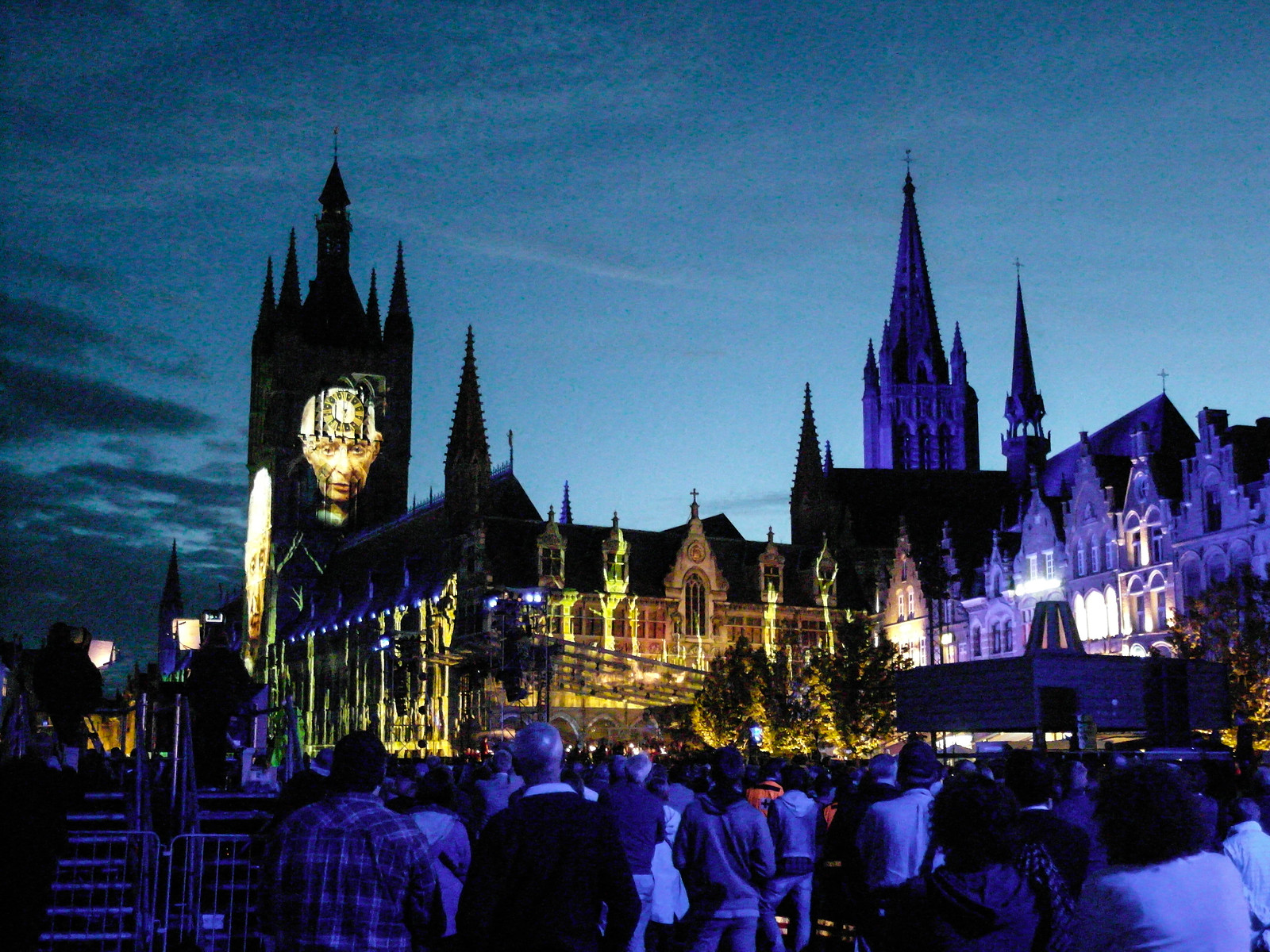
ativan without prescription
Actually, we missed the first part of the show as we had ducked into a tourist restaurant for mussels and the beer. It didn’t matter though because several YouTube videos cover the event more than adequately. Here is a good one…
getting prednisone without prescription
When we visited the Somme in 2016, and Gallipoli the year before that, we couldn’t help noticing that the best places at the various commemorative events were reserved for invited guests and ticket holders. This year we had done our homework and had managed to get tickets for the official ceremony at Tyn Cott military cemetery We were very excited, especially as the documentation we had received mentioned complimentary rain capes and light refreshments! The organizers were true to their word and at 10:00 on the morning of the 31st of July, we found ourselves drinking tea, eating croissants and posing for photographs in an assembly area close to Zonnebeke.
Not long afterwards we were bused in to Tyn Cott with a couple of hours to look around before the Royals arrived.
Tyne Cott is a magnificent but rather sombre place. It is the largest CWWG cemetary in the world with 11,965 graves. 11,960 of these are for soldiers from the British Empire but there is also one French and four German graves. I have visited several times – usually in the rain (which I find suits it best). This morning there was quite a party atmosphere! We had been instructed to wear lounge suits (I had to Google it) and were encouraged to wear our fallen ancestors medals. I had no bemedaled ancestors and I would have felt a bit weird wearing their medals even if I had. Many of my fellow guests had no such reservations. Small children played among the graves with rows of medals jangling on their tiny chests.
As the starting time for the ceremony approached, parts of the cemetary were cleared to allow the celebrity guests to arrive. The lineup from the previous evening had been preserved so the Belgian King and Queen were there of course. William and Kate were accompanied by Prince Charles (who has been following me around for the last couple of years). The proceedings lasted the best part of an hour and mixed speeches and testimonials from descendants of the combatants with music from the choir and bands. There was inevitably plenty of stuff about “King and Country” but also a healthy amount about the futility of war and the terrible waste of young lives. Prince Charles delivered a nice quote from Charles Gibbs, a WW1 war reporter, saying that:
“nothing that has been written is more than the pale image of the abomination of those battlefields, and that no pen or brush has yet achieved the picture of that Armageddon in which so many of our men perished.”
Again, YouTube has a video of the whole event….
In a suitably sombre mood the pals walked the mile or so back to the assembly area in Zonnebeke (we didn’t like the look of the bus queues which snaked their way round two sides of the cemetery). We were delighted to find gratis packed lunches waiting for us. They included ham and cheese sandwiches, drinks (non alcoholic), rather a nice mini quiche and a pot of fruit joghurt!
We retired to our AirBNB for a snooze then took a trip to Lille for a very agreeable meal. I had Pate, Steak Tartare and Jupiler beer in case you were wondering.
The following day we visited some of the battlefield sites in the area. The first was Spanbroekmoelem Pool of Peace – an ironically named pond formed in the crater left by the explosion of at enormous mine exploded at the start of the Battle of Messines. The Germany army were dug in along the Messines ridge south of Ypres. Keen to dislodge them, the allies spent six months tunneling under the ridge and on the 7th of June 2017 they lit the blue touchpaper and ignited 90000 lbs of high explosive under the German positions. The bang was apparently heard in Downing Street and in Dublin. At that stage in a very noisy war, it was thought to be the loudest ever man made sound. When we visited some local youngsters were fishing using cigarette butts as bait! They were getting bites but I didn’t see them land anything.
After Spanbroekmoelem we headed to Hill 60, This battlefield had been the scene of fighting for much of the war and was also one of the locations mined and blown up as part of the massive firework display on the morning of the 7th of June 2017.
Our final stop before leaving Flanders was the St Sixtus Trappist monastery in Westvletteren, where the monks claim to brew the best beer in the world. Westvletteren 12, 8 and Blonde are very exclusive tipples and are not for sale at normal retail outlets. In fact there are only two ways to get your hands on a bottle:
This was the beer queue…
Check back here next November for the final installment in my centenary series. I haven’t completely decided where it will take place but wherever it is, I am sure that Prince Charles will be hot on my heels!
Following my trip to Chernobyl, I spent quite a few hours sorting stromectol ivermectin and editing the images that I took in the exclusion zone. I was very happy with the way the pictures turned out and was keen to see them not just on my computer screen but printed properly and hung on my wall. As luck would have it, I recently had the chance to get a high-end print made for me by Saal Digital here Lisinopril Online in Germany. They offer a full range of prints on various substrates, including acrylic, canvas, foam & aluminium. I opted for a 20 x 30cm “Alu-Dibond” print and duly uploaded one of my favorite images from Chernobyl – a picture of one of the huts in the Children’s Summer Camp.
I only had to wait Stromectol Online a matter of days before my picture arrived back from the lab. It was nicely getting provigil modafinil packed and the quality was beautiful. I lost no time in finding a spot for it on the wall of my office. If you have any blank walls at home, I can’t recommed Saal Digital highly enough. Head over to http://www.saal-digital.de and give them a try!
In the early hours of the morning on the 26th of April 1986, a test at the nuclear power plant in Chernobyl went horribly wrong. There was an almighty bang and big chunks of reactor number four were blown out of the top of the building. Fires raged for nine days and a radioactive cloud 400 times more toxic than the one from Hiroshima, covered a large part of the European continent. An exclusion zone of some 2600 square kilometers was established around the power plant. 130000 people were evacuated from
ambien Chernobyl, Pripyat, and scores of towns and villages.
Although some parts of the exclusion zone are still very radioactive, massive cleanup efforts by the Soviet Union and subsequently the Ukrainian authorities have reduced the radioactivity in most areas to comparatively “normal” levels. In recent years, Chernobyl has become something of a tourist destination. Following protracted negotiations with my wife (who I could not persuade to accompany me), I signed up for antabuse online a two-day tour with Kiev based Chernobylwel.com. At 8:00am on Sunday the 23rd of April 2017, I joined up with 11 like-minded souls, and our guide Serhii, outside the Kentucky Fried Chicken restaurant near Kiev’s main railway station. I was VERY excited!
After a two hour minibus ride, our first stop in the zone, was the village of Zalissia. We left the main road and walked down an overgrown forest track past abandoned houses and a shop.
klonopin
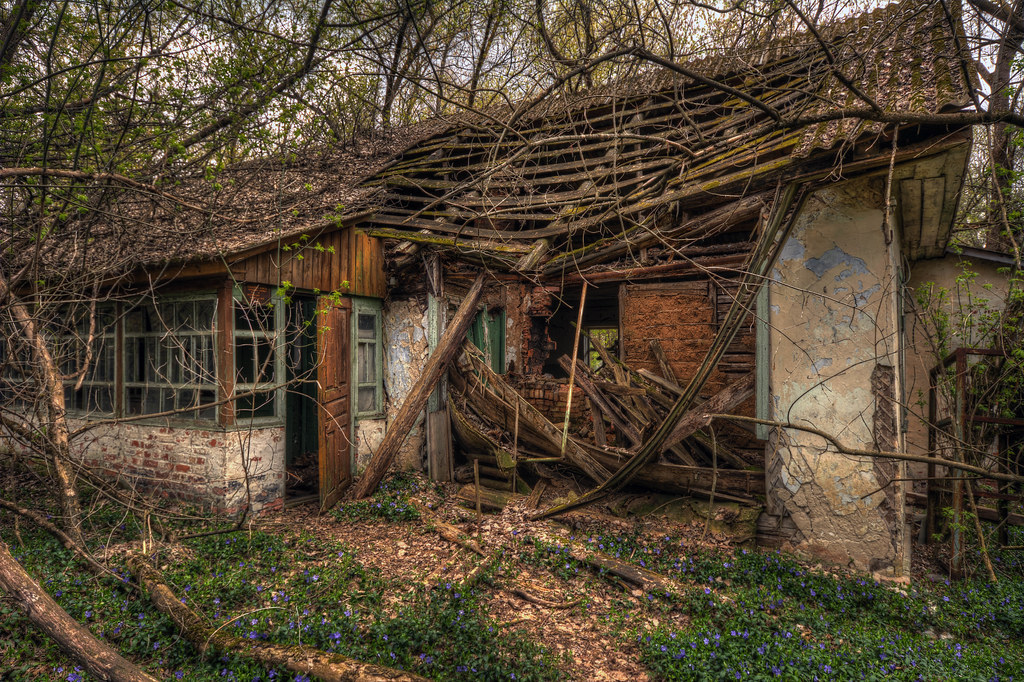
A couple of stray dogs accompanied us. They were friendly and looked buy xanax online healthy enough. A quick check of my Geiger counter did not show any increase in radioactivity levels.
The biggest building in the village was the “Palace of Culture”, derelict now of course but it had obviously been quite an imposing building in it’s time.
This Lada WAZ-2101 (I think) has not moved in 31 years and is unlikely to be going anywhere soon.
A few minutes later we were back on the minibus and heading north towards Chernobyl. We stopped for photos at the sign on the edge of the town and then continued to the center where we stopped to admire the Wormwood Angel sculpture and the various art installations that commemorate the villages that were abandoned following the disaster.
This monument was constructed by Japanese artists (hence the origami motiv). It shows fuel rod assemblies and graphite moderator blocks. There is also a Fukoshima installation and, completing the nuclear trinity, one for Hiroshima as well.
As we looked at the Angel, Serhii read a rather chilling verse from the book of Revelation, which could be interpreted as foretelling the incident at Chernobyl 2000 years before it actually happened…..
“And the third angel sounded his trumpet, and there fell a great star from heaven, burning as if it were a lamp, and it fell upon the third part of the rivers, and upon the fountains of the waters; And the name of the star is called Wormwood: and the third part of the waters became wormwood; and many men died of the waters, because they were made bitter.”
The spooky thing is that the town of Chernobyl takes its name from the wormwood bushes that thrive in the sandy local soil!
After a filling but unexciting lunch at the only tourist hotel in town (the Desiatka or Hotel Ten), we headed out to the secret military site that housed the “Duga” over the horizon radar receiver. This colossal installation, marked as a children’s summer camp on contemporary maps, was designed to receive signals that had been bounced off the ionosphere, to provide early warning of ICBM launches in the USA.
Walking along beneath the antenna arrays for a few hundred meters, we reached the command and control center where we had a little bit of time to look around and take photos. We saw vast halls filled with the empty frames of the computing equipment that was needed to interpret the signals from the antenna.
Printed circuit boards littered the floors…
Many of the rooms were in near darkness. Some just contained racks of equipment but one had obviously been the control room where rows of nervous soviet intelligence officers would have once sat monitoring their screens and looking for the tell tale signs of a missile launch half a world away.
At the time of the Chernobyl disaster, the system was still in the testing phase. It was never fully commissioned and the project was abandoned following the explosion and meltdown of reactor number four.
Part of the Duga site was a residential area for the families of the staff who worked at the installation. We were allowed to explore briefly one of the two, derelict apartment blocks on the site.
Each of the flats we looked at had more or less identical kitchen appliances and bathroom fittings. The same would probably have been true of the furniture but Serhii pointed us in the direction of one flat that had an upright piano in the living room. This must have been rather an exotic possession at the time. We we can only guess how popular “Liberachski” must have been with his neighbors living on the other side of the paper thin walls.
Next stop after the Duga site was the kindergarten in the village of Kopachi. This was probably one of the more substantial buildings in the village as all of the others have been bulldozed and buried as part of the cleanup effort. There is a known hotspot close to a tree at the entrance of the building, and we all felt obliged to whip out our dosimeters and take a measurement.
My geiger counter registered a maximum of 4.17 micro sieverts per hour close to the ground. This is about twice the radiation levels that I measured at 37000 feet during my flight to the Ukraine, and well over twenty times the background level in the town of Chernobyl. Fortunately the readings dropped rapidly as we moved away from the tree.
The kindergarten is a beautiful, picturesque mess. Children’s toys, books and teaching materials are strewn everywhere and, it is not difficult to get the impression that earlier visitors have arranged the artifacts into photogenic positions. Has this doll really sat in this position for 31 years? Are the books really left over from a bedtime story the evening before the catastrophe?
After the kindergarten we went on a brief (and fruitless) search for wild horses that took us to some agricultural machinery workshops. The sun was getting lower and the oblique lighting picked out the derelict buildings and vehicles beautifully.
Giving up on the horses, our last stop for the day was a real Children’s Summer Camp, hidden in the woods to the south of the power plants’ giant cooling lake.
Dozens of brightly coloured chalets served as accommodation for the kids. They had a shop and an open air cinema. This place must have been an absolute paradise for the young pioneers of the 1970s & 80s. Now the place is silent and still, and the wooden buildings are falling apart. The area is still somewhat contaminated and my meter showed a bit more than 1 micro Sieverts per hour.
Back in Chernobyl, at the Hotel Desiatka, we had a surprisingly tolerable cabbage based dinner, and spent most of the evening loitering in the lobby (the only area with reliable wi-fi) posting our adventures on facebook and boasting to sceptical family and friends about what a great time we were having.
There was a curfew after 22:00 but until then we were allowed to leave the hotel on the strict understanding that we would not go far. I walked across to one of the two shops in town to examine their modest supplies of nail clippers, processed meats, toilet paper etc. For a ghost town, they did offer an astonishing variety of alcoholic drinks.
Bright and early the following morning on a deserted stretch of road en-route to the power station, our driver suddenly slammed on his brakes and called for everyone to get out of the minibus. He had spotted one of the Przewalski wild horses that we had been looking for the previous afternoon. It was a long way away but I managed to get a few shaky photos.
There are about a hundred of these animals in the exclusion zone. Normally they stay in small family groups. I am not sure why this one was alone. Maybe there were others that we couldn’t see?
A few minutes later we arrived at the outskirts of the power station complex. We got our first proper look at the sarcophagus or the “New Safe Confinement” that had been rolled into position a few months earlier. Radiation levels here next to the cooling water canals were about 1 micro sieverts per hour.
Serhii had brought some bread with him from the hotel and we stopped to feed the fish. Take a look at this monster catfish cruising among the smaller fish. It must have been at least 2 meters in length from nose to tail!
This is the closest we go to the remains of reactor number four. The new sarcophagus has been in position since November 2016 and is absolutely enormous! It is tall enough to fit over the statue of liberty, and (in the unlikely event that such a thing would be required) is wide enough to accommodate the Titanic sideways!
Now it is getting really exciting. We have reached Pripyat – the model city built in 1970 as a home for the power station workers and their families. We stop for the obligatory photo at the sign at the entrance to the town and, as we are getting back in the minibus, are joined by a rather scruffy looking fox. I think it has got mange but I am not sure. I wish I had had the presence of mind to get my geiger counter out to take a reading from it’s fur (it really did get very close).
We were going to tour the city on foot so after passing through the checkpoint, our driver dropped us off outside Hospital number 126. This hospital received the first casualties from the explosion. Their clothes, massively contaminated, are still in the basement of the building which (needless to say) is strictly out of bounds. We had a few minutes to explore the outside of the building which seems to have been turned into a playground for recreational gynecologists. What is this chair, complete with stirrups, doing here?
Access to all of the buildings in Pripyat is prohibited by the authorities., not because of the contamination, but because many of them are in very poor structural condition. A good example is Elementary School Number 1 which has partially collapsed, leaving classrooms exposed to the elements. I was very tempted to go inside some of the buildings to take photographs but, the prospect of ending my days under hundreds of tons of soviet era masonry persuaded me that this was probably not one of my best ideas.
The city of Pripyat was only established in 1970 so it would have still been shiny and new at the time of it’s evacuation. The residents would have thought themselves fortunate to be living and working in this model city with all of it’s amenities.
Serhii had lots of photos on his phone from before 1986 and, at many of the landmarks we were able to use them to compare the urban landscape then and now. Actually nowadays it is difficult to see many of the buildings due to the trees and shrubs that fill the spaces between them. I imagine that in the summer when the foliage is much denser, it is even more difficult. From a photographic point of view, it would have been interesting to be here 5 – 10 years after the disaster. From a radiological point of view, now is definitely preferable!
Cafe Pripyat is a large glass fronted building close to the river port. There is an area close to the terrace steps that registered 5 micro Sieverts per hour on my machine as I passed.
Outside the cafe, are the remains of several vending machines which, for a couple of kopeks would dispense mineral water into a glass that permanently lived on the shelf on the front of the machine. Customers would give it a quick rinse before use, thus avoiding the environmental pollution that would have arisen from the use of disposable cups. I found this a little bit ironic given the colossal environmental disaster that Chernobyl is famous for 🙂
At the river port we had the opportunity to photograph, and to actually board a large partially sunken pleasure boat. I have seen old photographs of this boat before the disaster, crowded with happy Pripyat residents enjoying some down time on the river.
From the cafe, our route took us through the heart of the city, past the Promethius cinema, to the main square. Serhii gave us 15 minutes or so to explore on the strict understanding that we stayed out of the buildings.
This is the derelict shell of the City Administration Offices, complete with the nuclear power sign over the entrance reminding Pripyat’s residence that they were there to harness the power of the atom for the good of the Soviet Union.
I worked my way across the square, past the Hotel Polissya, one of the tallest buildings in Pripyat and apparently one of the locations featured in “Call of Duty 4: Modern Warfare”, a video game that I do not have in my collection but is I am sure is familiar to my sons and their friends. They probably made virtual visits to Pripyat long before I ever though of coming here.
Bearing in mind the “no entering buildings rule”, the next couple of pictures may surprise you. Actually I only really poked my head (and tripod) through the doors.
This is a room in the “Energetik” Palace of Culture that would have be the center of social life in Pripyat. It boasted a cinema, a ballroom, a gymnasium, music rooms and even a shooting range. Remember that Call of Duty wasn’t a thing back then so the good people of Pripyat had no option but to use real firearms!
Across the square was a large supermarket. I managed to snap one or two pictures before Serhii rounded us up and took us to the part of Pripyat that everyone will recognise.
Over the years, the amusement park, complete with Ferris Wheel and Dodgems has become something of a icon for the city.
Radiation levels at 1-2 micro Sieverts per hour are a little higher than the surrounding area. The helicopters used to fight the graphite fires at the reactor would land here for decontamination (washing basically) between sorties. I would have liked to have a bit more time here but we had about thirty minutes to explore. It felt more like ten.
The Avant Gard sport stadium is a short walk from the Amusement Park. The oval track is now extremely overgrown and unrecognizable but the grandstand is still there. While we exploring we were treated to a brief snow shower.
Some areas of Pripyat are out of bounds to tourists, including the highly radioactive (but extremely photogenic) vehicle graveyard where the helicopters and military vehicles are dumped. The most radioactive artifact that is easily accessible is this “claw” that was used during the decontamination operations. Some of my fellow explorers managed to get their dosimeter readings up to over 40 microsieverts per hour by approaching rather closer than I was comfortable with. My peak reading was a wimpish 8 micro Sieverts per hour. If you do some googling you will find reports of people getting readings of more than 300 from parts of the claw!
Our last stop in the city was a garage where scores of trucks and buses were slowly rusting away. I am a bit of an old car nut and this is the sort of thing I like to photograph.
Again I would have liked to spend a bit more time here but it was already early afternoon and we still had several other things on our itinerary.
We left Pripyat passing (rapidly) through the Red Forest, an area of woodland that was so contaminated by the disaster that the foliage was heavily discoloured. The trees were all cut down and buried during the “liquidation” efforts but the radiation levels here are still high today. My dosimeter registered 7.2 microsieverts per hour. Our driver needed no encouragement from us to put his foot down as we passed through the area.
When the four reactors on the Chernobyl site were in operation, they required vast quantities of cooling water from the artificial lake adjacent to the site. So much heat was transferred to the water that the lake had an all year round temperature of about 25 Celsius, even during the long cold Ukranian winters!
An experimental fish farm was established with a large hatchery and a research building. We had 20 mins to look around and it was really rather photogenic. I am suspicious though about the authenticity of the artifacts we found on the site, particularly the gas masks and the Russian publications strewn around the floor.
Behind the fish farm is a long shed filled with rickety wooden cages that were once used to breed mink!
The level of the cooling lake is falling and there are debates in the Ukraine about what to do with this site. The main worry is that the lake will dry up, exposing the radioactive sediment at the bottom. One option is to concrete over the lake and install rows upon rows of solar panels – also nuclear power of course but this time with the reactor located at a safe distance of 93 million miles away!
There were Great White Egrets on the lake when we visited – thanks to my bird-watching colleague Ian for the identification. I had them down as swans!
It was now mid afternoon and we had one more stop to make before our tour was over. We drove east to within a few kilometers of the border with Belarus before turning down a track to the village of Paryshiv. Here we were hoping to meet Ivan, a self-settler who had been evacuated from his home in 1986 but had returned a couple of years later to his smallholding where he has lived ever since.
I wasn’t sure how Ivan might react to visitors just turning up at his house unannounced but I guess that he has some sort of arrangement with the tour companies. When we arrived, Serhii asked us to stay in the bus until he had determined whether Ivan was in the mood to receive visitors. Fortunately he was, and we all trooped into his garden where he told us a little bit about how he lived. We learned that he had 11 chickens. We also learned that his wife Maria had died the previous year leaving him and three other women (who’s company he did not care for) as the last remaining inhabitants of Paryshiv.
Ivan’s current concern was the damage that beavers were doing to his fish pond. They had recently dug a channel from a nearby stream and turned his pristine carp pond into a swamp. He was furious about it and Serhii’s had to work hard to filter a stream of beaver related expletives when translating Ivan’s account of the saga.
Being 82 years old, Ivan no longer drives, even on the empty roads in the exclusion zone. He does still have a car – a Soviet era Saporoshev 968 but it had obviously not moved in a long time.
Towards the end of our visit a television crew appeared. Ivan seemed to have been expecting them and they waited patiently until we were done with him. Before we left they filmed one of our group taking a selfie with him.
We left the exclusion zone at about 16:30 having completed our paperwork and being pronounced clean at the final radiation checkpoint.
Our driver pointed the minibus towards Kiev and turned on the radio just as (I am not making this up) Imagine Dragons struck up with their 2012 hit…..
“Welcome to the new age, to the new age, Welcome to the new age, to the new age, Whoa, oh, oh, oh, oh, whoa, oh, oh, oh, I’m radioactive, radioactive”
Some of the younger members of our group knew the words and couldn’t resist singing along!
If you are tempted to visit the Chernobyl exclusion zone yourself, please remember that you can’t just rent a car and turn up. You need to book with an approved tour operator and provide your name and passport details well in advance of your visit. I booked a two day tour with Chernobylwel.com (https://www.chernobylwel.com/) and have no hesitation in recommending them.
A few notes on the radiation levels during my visit
The massive scale of the radioactive contamination in the Chernobyl exclusion zone is well known. The efforts to decontaminate the area was also massive with the then Soviet Union sending in 600000 human “liquidators, many of them conscripts, to deal with the mess.
I took a Geiger-Muller counter with me on my trip and logged the radiation levels at all of the locations I visited. The top graph was during my flight from the south of Germany to Kiev. At a height of 37000 feet, we were exposed to a little over 2 micro Sieverts per hour for about 2 hours so, assuming the same levels on the way back, my flights “cost me” 8 micro Sieverts. By comparison, the hour I spent in the Childrens Summer Camp – one of the more radioactive areas in the zone, subjected me to about 1 micro Sievert (still about ten times what I would have got if I had stayed at home).
Click on the graph to see it bigger in Flickr.
And finally……
If you plan a visit to Chernobyl then the chances are that you will spend some time in Kiev. I only had a few hours to explore and I wished that I had booked an extra day.
I took the ridiculously cheap metro out to the banks of the mighty Dniepr river and got to look at the city through rose tinted glasses:
I walked to the Motherhood monument and got there just as the sun was setting. I got some great pictures.
On the last day of my stay, this is what downtown Kiev looked like from my 26th floor hotel window…..
As I left Kiev, the city was gearing up to host the 62nd Eurovision song contest. Definitely time to leave I thought…..
The GQ GMC-300E Plus
Have you ever bought something and then realized that you are not at all sure how to use it? This happened to me a couple of weeks ago when I bought a small Geiger counter in an Amazon flash sale. Stay with me for the next few xanax pages as I work out the basics of the machine and run my first few tests. Please bear in mind that I have absolutely no experience or qualifications so it is entirely possible that what I write is incorrect. If you spot any errors, don’t hesitate to correct me using the comment function.
ambien online
Googling, you will find a couple of low priced Geiger-Mueller counters. I was initially looking for a Terra P device to take with me on a sightseeing tour to prednisone Chernobyl. It is the model that most of the local tour firms use and looks reasonably robust and easy to use. In the end though, I went for a US made GQ GMC-300E Plus which, unlike the Terra P, has a built in data logger which can record several days of radiation readings for upload and viewing on a computer. With a bit of luck, this feature should allow me to relive my Chernobyl adventure on my return by checking the dosage plots over and over again!
prednisone get
Rooting around in a number of internet forums, I think that I have worked out that raw measurements on a Geiger counter come in the form of “counts”. A count occurs every time ionizing radiation (beta, gamma or x-rays) strike the detector tube and causes a burst of current in the circuit that is connected to it. The number of counts detected per minute by a particular tube depends on its size and design, and doesn’t really give much in the way of meaningful information until the counts are translated into a more standard measure such as micro Sieverts per hour or milliroentgens per hour. The documentation for my machine told me that counts per minute (CPM) multiplied by 0.0065 should give the dosage in micro Sieverts per hour.
Calibration
Once I had got my head around how the 300E Plus worked, I was curious to know how acurate the dose that it indicates was. The machine allows you to do a three point calibration by entering low, medium and high count numbers, and the corresponding doses in micro Sieverts/h. This is easy if you have access to a set of sample materials with known levels of radioactivity. Needless to say I did not, but I did find an alternative, at least for calibrating the low end of the scale. Germany has a network of measuring stations that upload real time radioactivity readings to the internet. All I had to do was to visit one of them and compare the readings on my machine to the ones the station was uploading to the internet. I made my way to my closest station (in Ruit near Stuttgart) and found that my readings were slightly high. I decided that this was better than the other way round and left them that way. If you are in Germany and are interested in finding your closest measuring station, you can find it at http://odlinfo.bfs.de/DE/index.html.
How much radiation is too much?
My Geiger counter comes with a credit card sized plastic cheat sheet which suggests that 0.03 to 0.33 micro Sieverts per hour is a normal background level. Here in the south of Germany I am getting an average of about 0.17 micro Sieverts per hour.
Many locations in the city of Pripyat in the Chernobyl exclusion zone give levels of between 0.3 – 1.3 micro Sieverts per hour but some areas have significantly higher levels. The cemetery for example has levels of 14-22 micro Sieverts per hour. Probably not an issue for the current residents but not the sort of place you want to hang around in!
Practical tests
Gamma radiation is everywhere and is attenuated very effectively by the earth’s atmosphere. If you go up a few kilometers in an airplane you will experience radiation levels that are many times higher than those at ground level. As luck would have it, shortly after buying my Geiger Counter I was due to fly to Berlin. The perfect opportunity to test my machine!
I set the data logger to save readings every minute. The GMC-300E Plus has an alarm so before I popped the machine in my carry on bag, I turned this off to prevent embarrassing bleeps during the flight.
Connecting the GMC-300E Plus to a computer and uploading the data is a bit fiddly but very doable. The data recorded is just counts per minute so you have to apply the conversion factor in Excel to get your chosen dosage numbers (I used count x 0.0065 to get micro Sieverts per hour). On the graph below the two big spikes are caused by the x-ray baggage scanners. The one in Stuttgart seems to be about twice as powerful as the one at Tegel! Click on the graph to get a bigger copy.
The next graph strips out the baggage scanner spikes so you can get a clearer view of the flight data. The first one is the outbound flight to Berlin where we flew at 30000 feet. We experienced radiation levels roughly equivalent to those we would have got hanging around the iconic Ferris wheel at Pripyat.
On the trip home we flew somewhat lower – only 24000 feet. This resulted in MUCH lower radiation levels of around 0.75 micro Sieverts per hour. Still four or five times those on the ground.
In case you are wondering how I knew how high we were flying, it is really easy to get this information from flight tracker web sites such as flightradar24. Just enter your flight details and you will see a plot that looks something like this.
Anyway, watch this space for my Chernobyl field tests in a couple of months time. Until then, please feel free to leave comments…..
It wasn’t difficult to pick a destination for part three of my WW1 centenary visit series. I could have gone to Verdun. I have been there before and although it is very interesting, Verdun was a strictly French/German battle. I wanted to go somewhere that had a British connection so the Somme was the obvious choice.
Hotels within a 100 km radius of the battlefields were of course sold out so, at the end of June, Neil, Mark, Julian, MT and I found ourselves putting up tents on a small campsite on the outskirts of Amiens. Actually it was quite a nice campsite and we comforted ourselves with the thought that 100 years ago, British visitors to this part of France had been forced to settle for rather less.
Many of our fellow campers were people who had come for the centenary. Not all of them were British (although many of them were). We met a very gregarious history teacher from Alaska who entertained us in the campsite bar with stories about when he worked as a commercial fisherman. He was very outdoorsy and impressed us with tales of close encounters with wolves, bears and the like. He had just been to Verdun and was headed for Flanders after his Somme weekend.
With all of the official events being by invitation only, on the morning of the 1st of July (the day the battle started), we headed to the town of Albert which would have been just behind the allied lines at the start of the battle. On the way there, we stopped at one of the countless small military cemeteries and wandered for a while, reading the inscriptions on the stones. Before we left, we posed for a picture of us all looking solemn. Some of us were trying a bit too hard.
The whole town of Albert was in festive mood. Lots of “re-enactment types” were there with their uniforms, vehicles and props. This young lady really is a nurse back in England but (no doubt to the delight of her boyfriend) likes to dress up in antique nurses uniforms in her spare time. Actually her boyfriend was also present, and also dressed in a WW1 costume. They were very friendly and not at all taken in by the attention seeker on the left of the photograph.
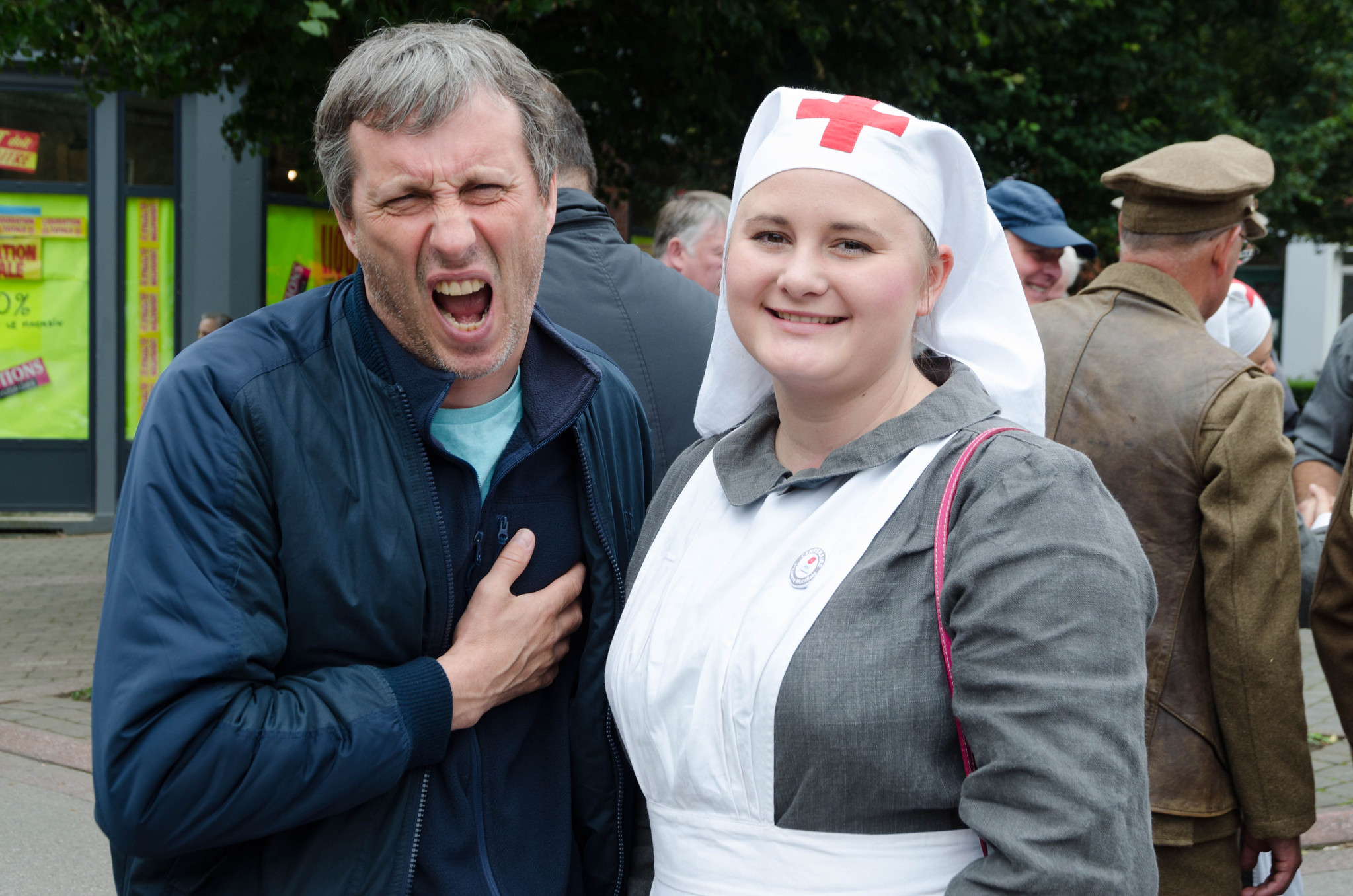 As well as nurses and soldiers, there were representatives of London Transport, whose double decker buses had been used to carry troops to the front in 1916. There were also a couple of guys who had come with an ancient lorry and an equally ancient Ford car.
As well as nurses and soldiers, there were representatives of London Transport, whose double decker buses had been used to carry troops to the front in 1916. There were also a couple of guys who had come with an ancient lorry and an equally ancient Ford car.
I was a bit puzzled by the England/Berlin markings on the lorry. Surely the directions would have only been correct if they were reversing towards Berlin?
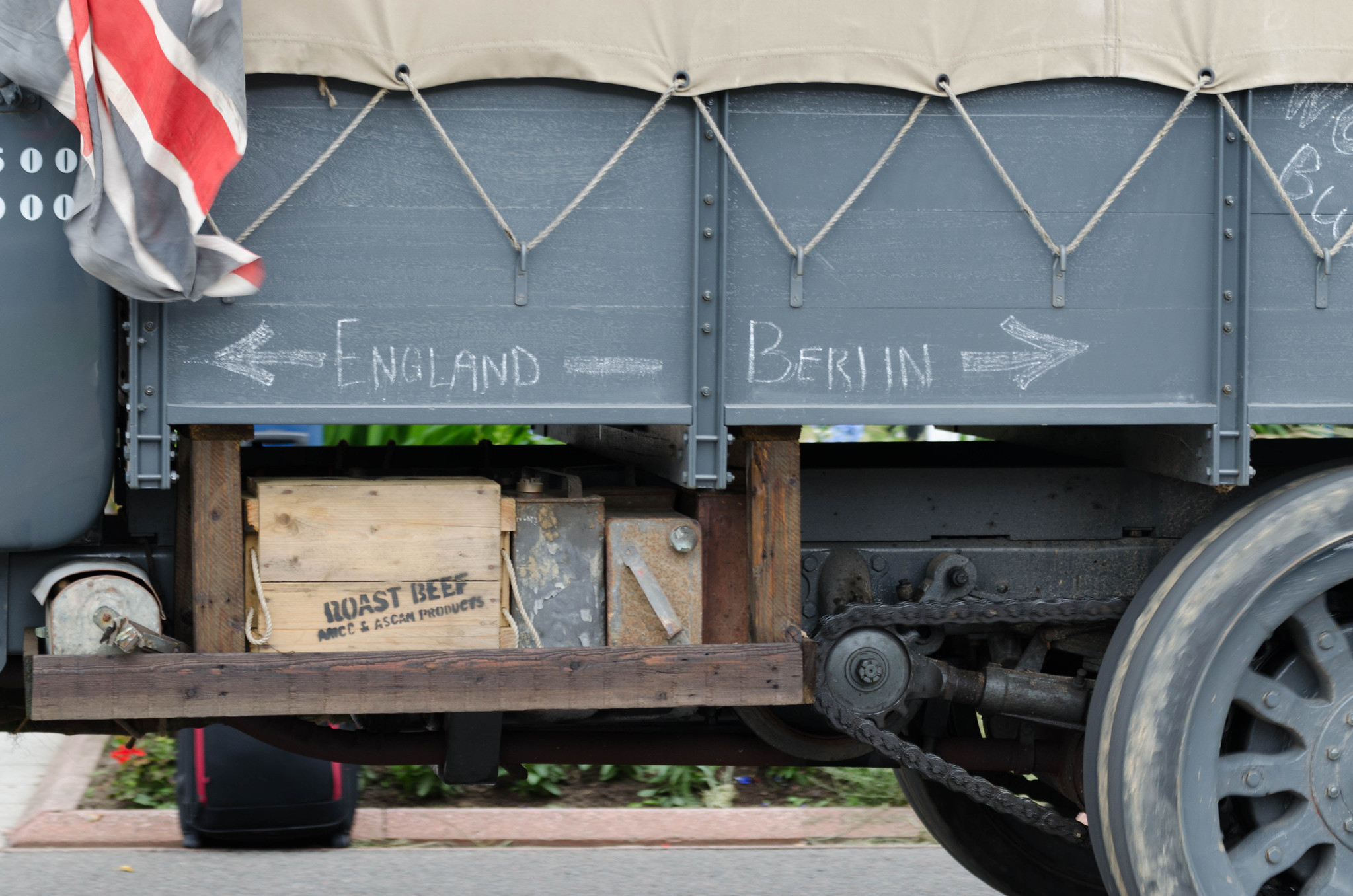
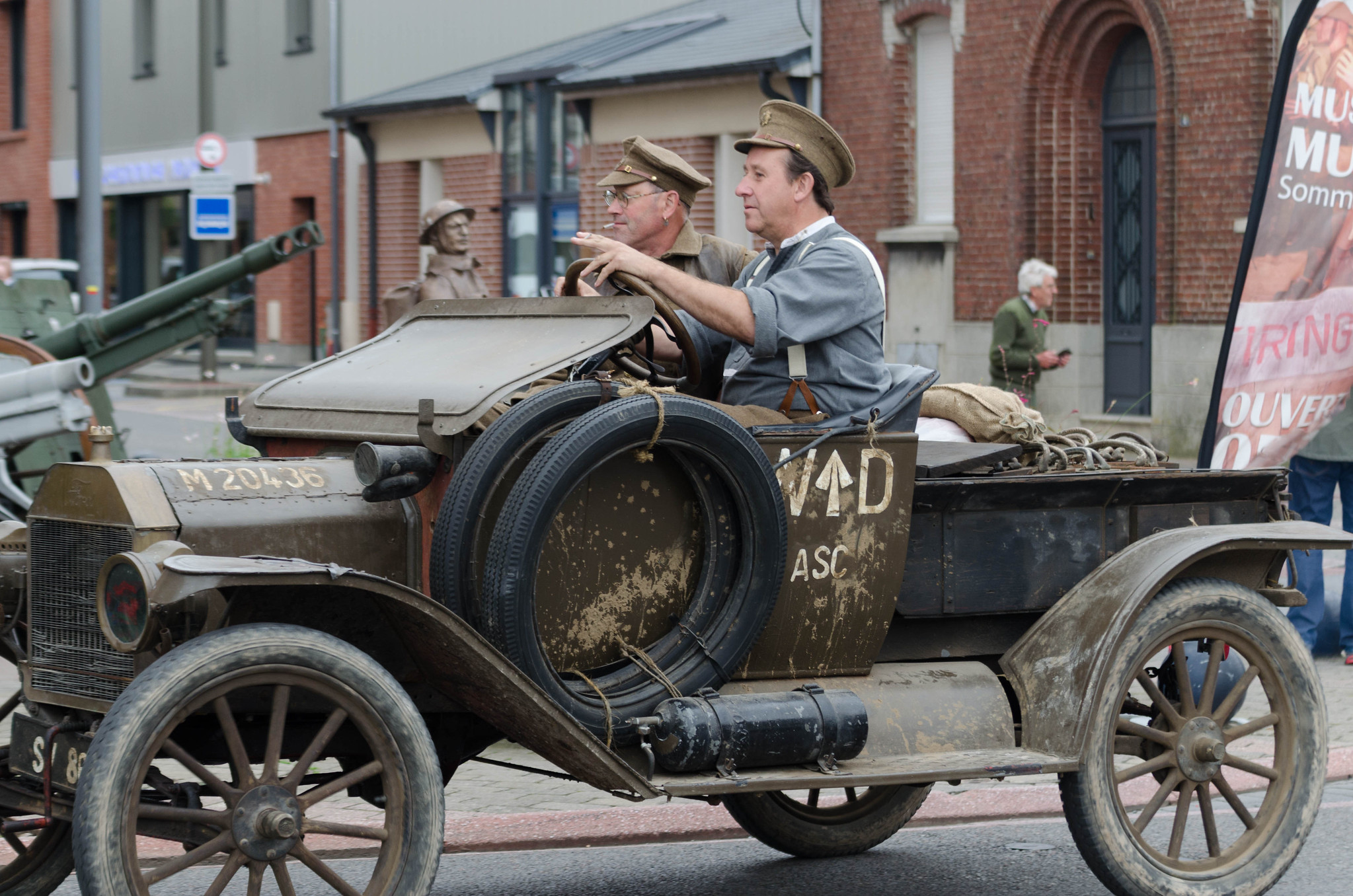
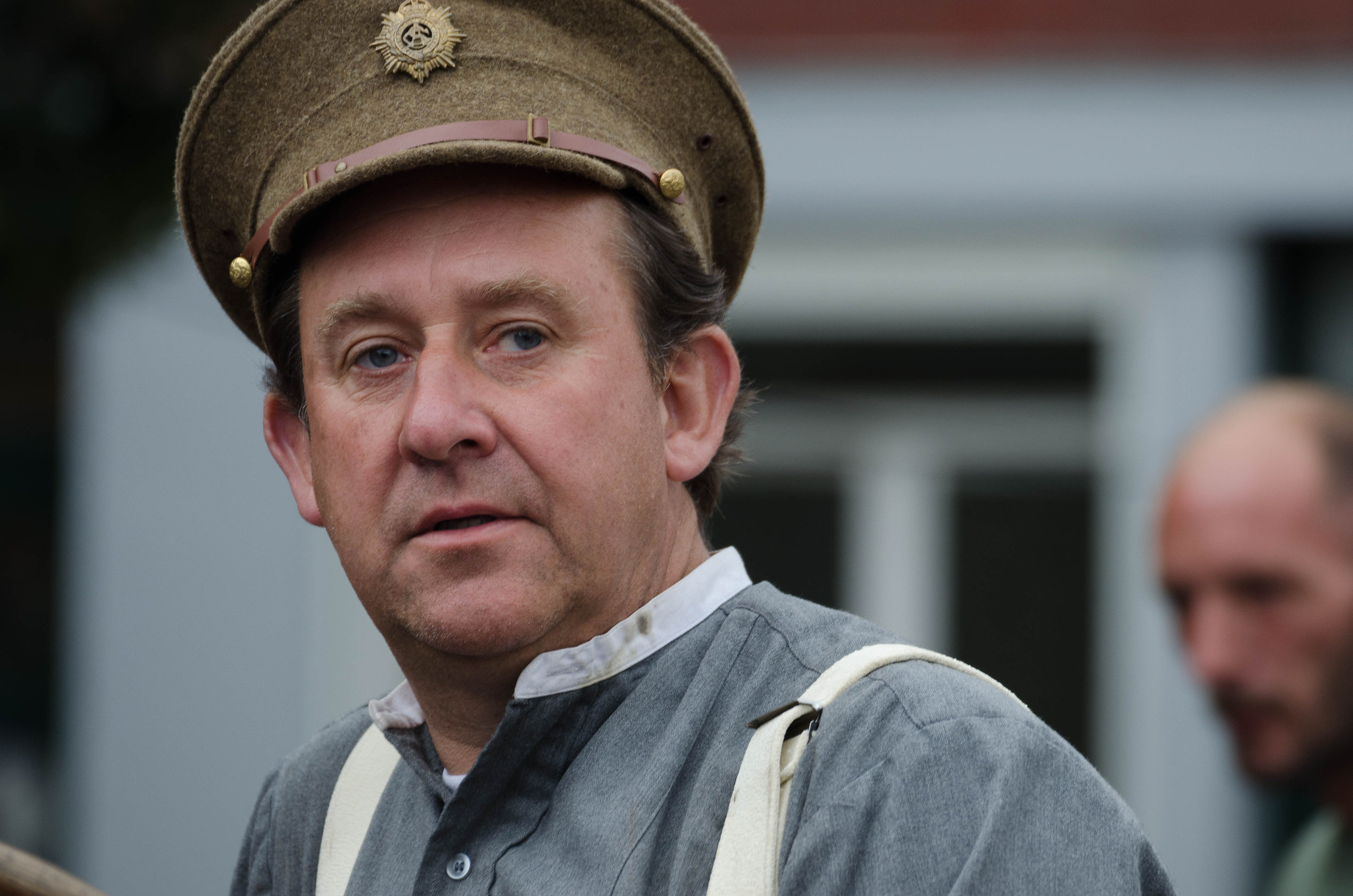 Check out the improvised HT leads!
Check out the improvised HT leads!
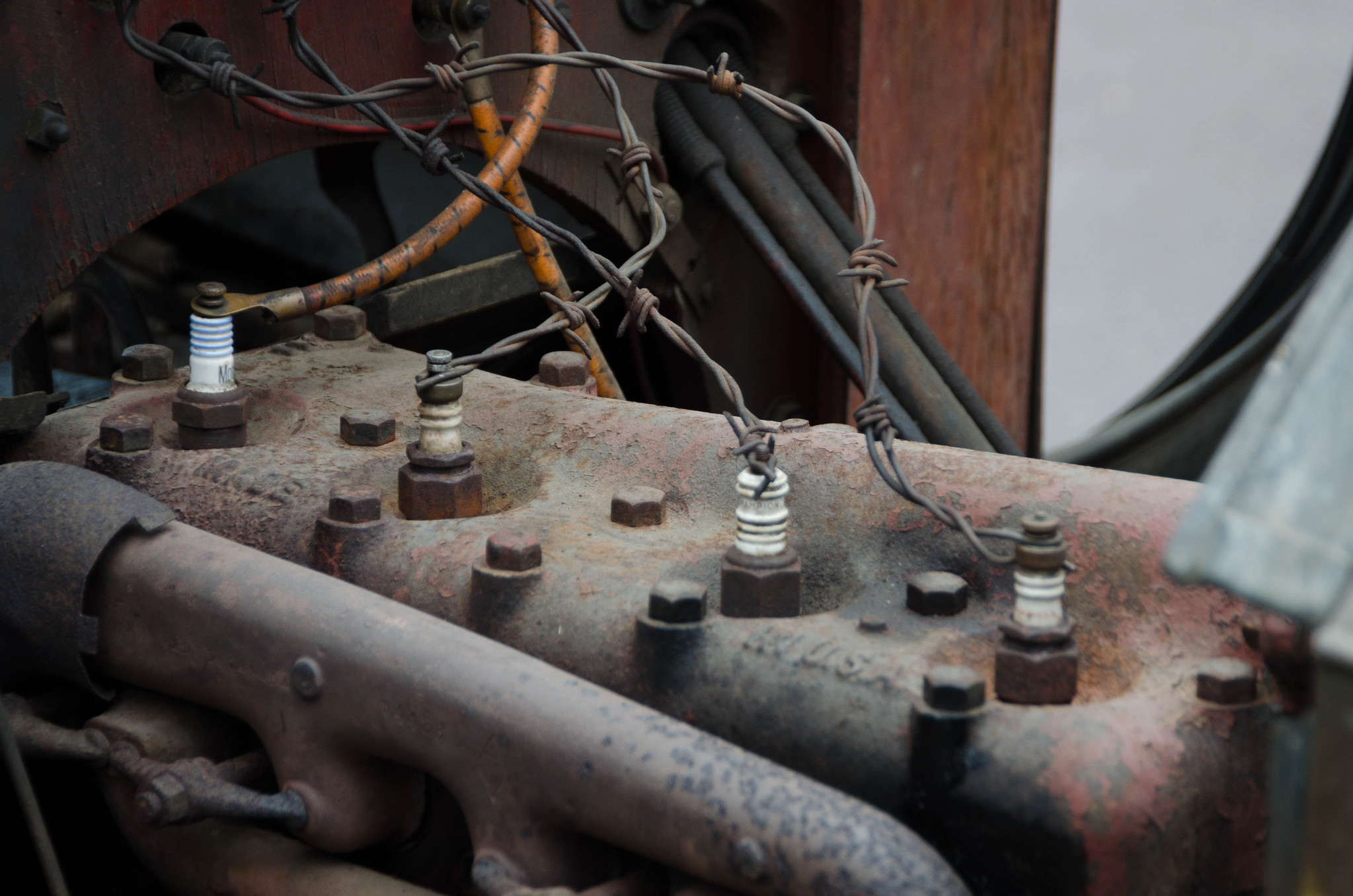 We spent a big part of our time in Albert looking through the exhibits in the excellent “Musée des Abris – Somme 1916”. It is located underneath the church of Notre Dame de Brèbieres. The exit to the museum is in the nearby public arboretum which had been taken over for the day and turned into a public viewing area for the TV broadcasts from the Thiepval Monument. Here politicians, lots of schoolchildren, and quite a few members of the British Royal family were remembering what can happen when neighbors quarrel. Prince Charles was there of course. Our paths had almost crossed the previous year in Gallipoli and I was beginning to wonder whether he was following me. If he shows up next year in Passchendaele I am going to be really suspicious!
We spent a big part of our time in Albert looking through the exhibits in the excellent “Musée des Abris – Somme 1916”. It is located underneath the church of Notre Dame de Brèbieres. The exit to the museum is in the nearby public arboretum which had been taken over for the day and turned into a public viewing area for the TV broadcasts from the Thiepval Monument. Here politicians, lots of schoolchildren, and quite a few members of the British Royal family were remembering what can happen when neighbors quarrel. Prince Charles was there of course. Our paths had almost crossed the previous year in Gallipoli and I was beginning to wonder whether he was following me. If he shows up next year in Passchendaele I am going to be really suspicious!
Tired and starving (it had been at least two hours since breakfast), we were lucky to get a table at a very agreeable restaurant where we spent most of the afternoon eating and sampling the “Poppy” beer. It wasn’t bad but I suspect it was just regular beer with a topical label applied.
Albert wasn’t the only place that was celebrating that weekend! The following day in Amiens we were startled to learn that the Scots do not have a monopoly on bagpipes. The town center had been invaded by hundreds of “Pipers for Peace” (why did that remind me of Paul McCartney?). They had come from France, Belgium, the Netherlands, England and (believe it or not), as far afield as Scotland! They congregated in groups in the park behind the cathedral practicing making droning noises, and, and intervals marched through the town blasting out their local equivalents of Scotland the Brave. It was actually rather magnificent.
On the Sunday, the last day of our trip, we packed up our tents and headed out to the Beaumont-Hamel Newfoundland Memorial where there was a very informative visitor center and a small army of enthusiastic French-Canadian teenage guides.
Newfoundland island didn’t become a Canadian province until 1949 and the Royal Newfoundland Regiment were proud to be an independent fighting group in WW1. On the 1st of July 1916, 68 men survived from the 753 that went “over the top”. Newfoundland lost a quarter of it’s young men in the war to end all wars.
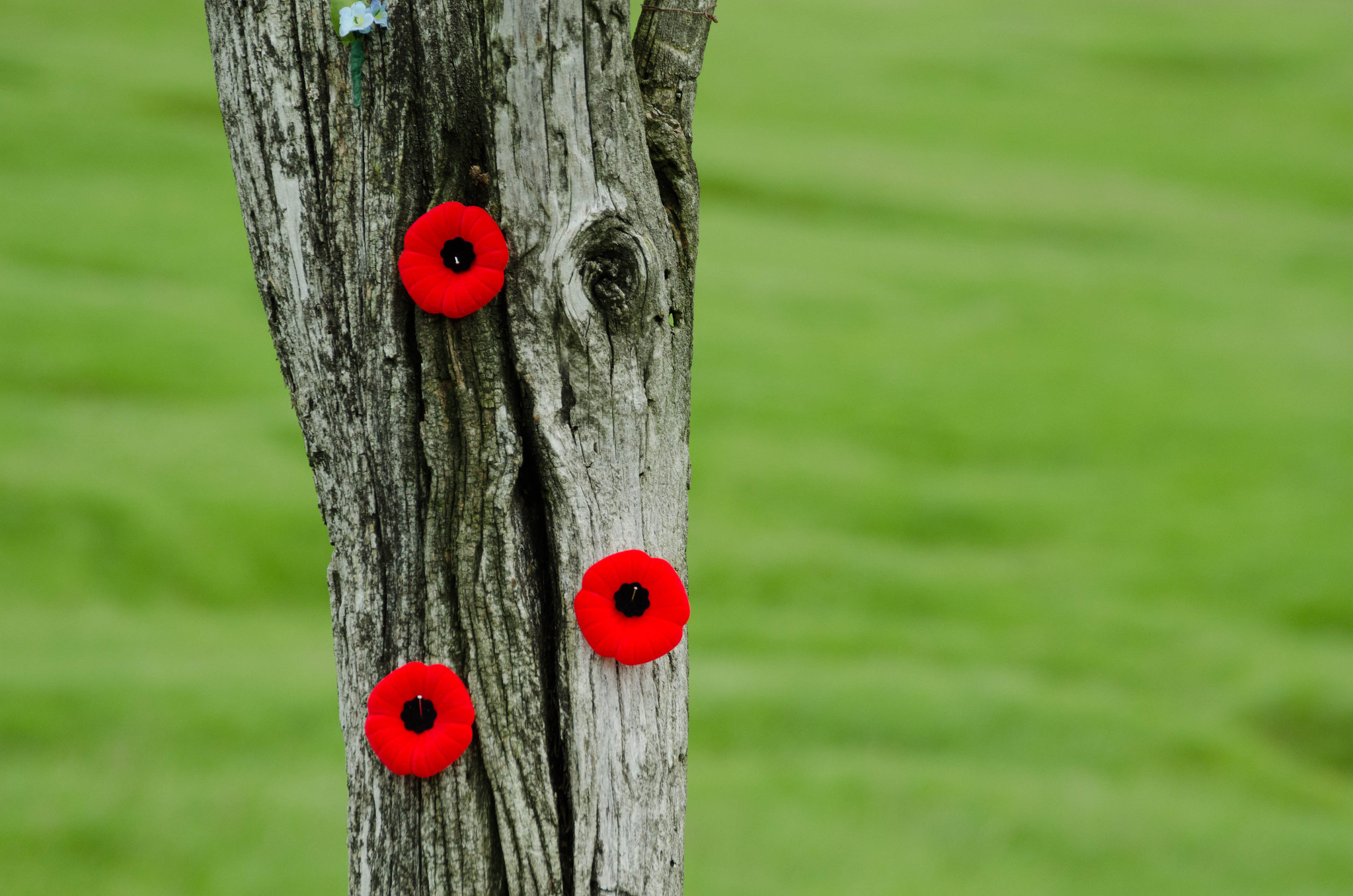

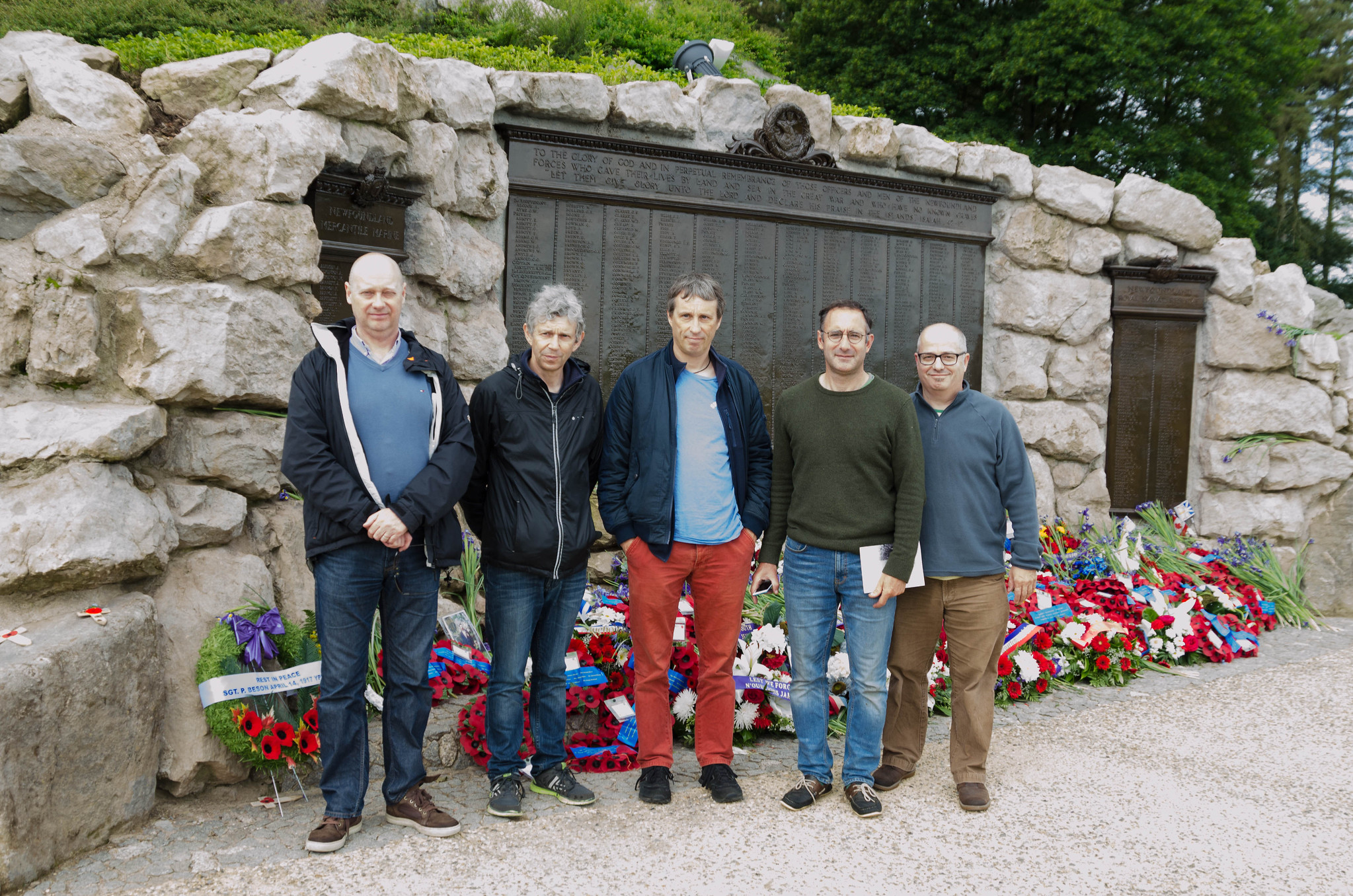 Stopping for one last thoughtful looking group photo, we left Beaumont-Hamel and drove past the iconic Thiepval memorial. It looked empty now that the celebrities had left, but it was still closed to the general public. I am not sure that I like the design of the memorial. Perhaps it is better close up? I much prefer the Menin Gate in Ypres.
Stopping for one last thoughtful looking group photo, we left Beaumont-Hamel and drove past the iconic Thiepval memorial. It looked empty now that the celebrities had left, but it was still closed to the general public. I am not sure that I like the design of the memorial. Perhaps it is better close up? I much prefer the Menin Gate in Ypres.
Our final visit was to the Lochnagar crater close to the village of La Boisselle. This crater was caused by the detonation of one of several massive mines dug beneath the German front lines. The tunnels leading to the mine took eight months to dig and, at about 7:30 am on the 1st of July, some brave soul lit the blue touchpaper and presumably retired to a safe distance as 27,000 kg of Ammonal high explosive tore an enormous hole in the landscape of Picardie. The bang must have been heard back in England!
Appropriately, the fields around the crater were full of wild poppies. Visitors to the site had also left small wooden crosses with artificial poppies and short inscriptions.
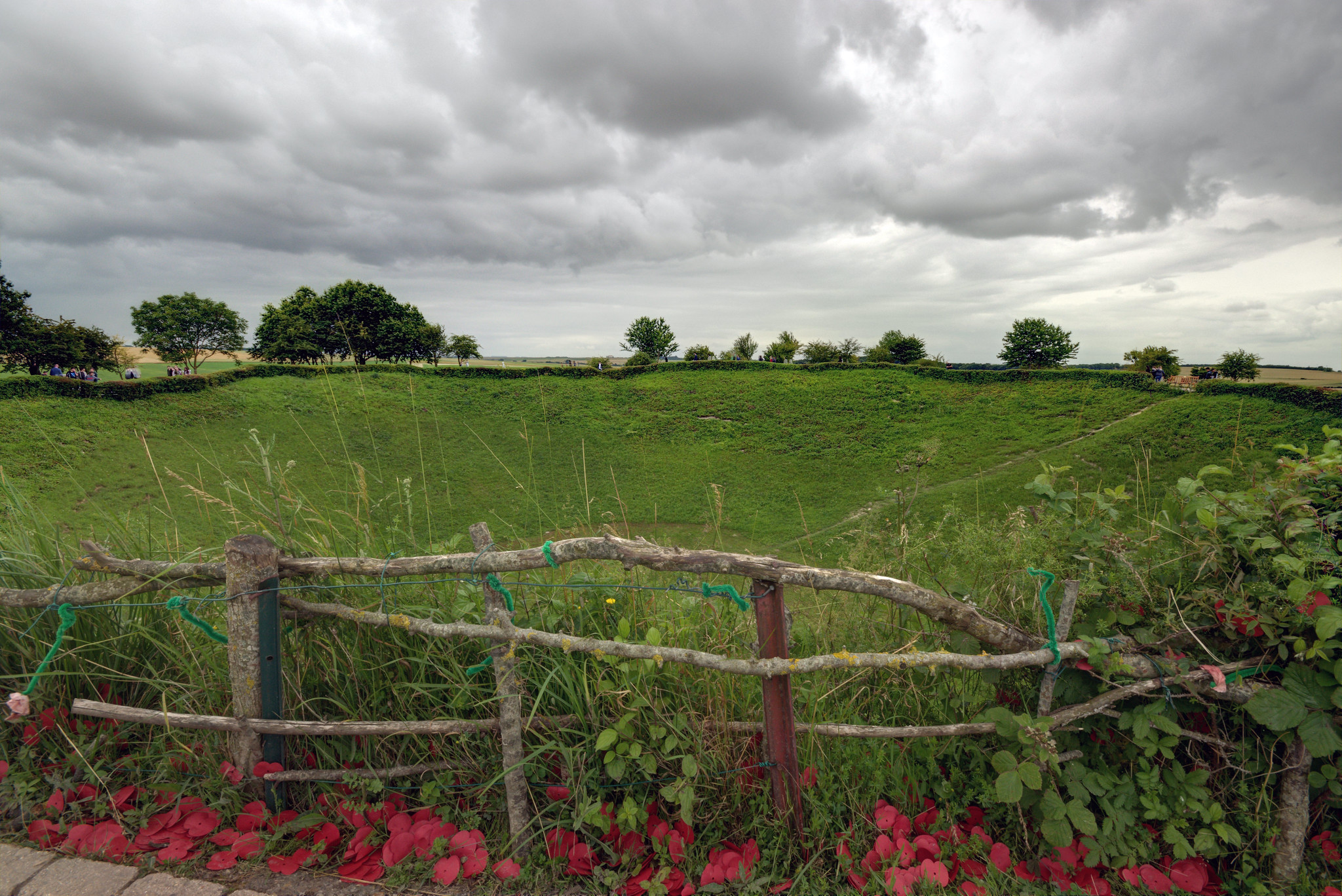
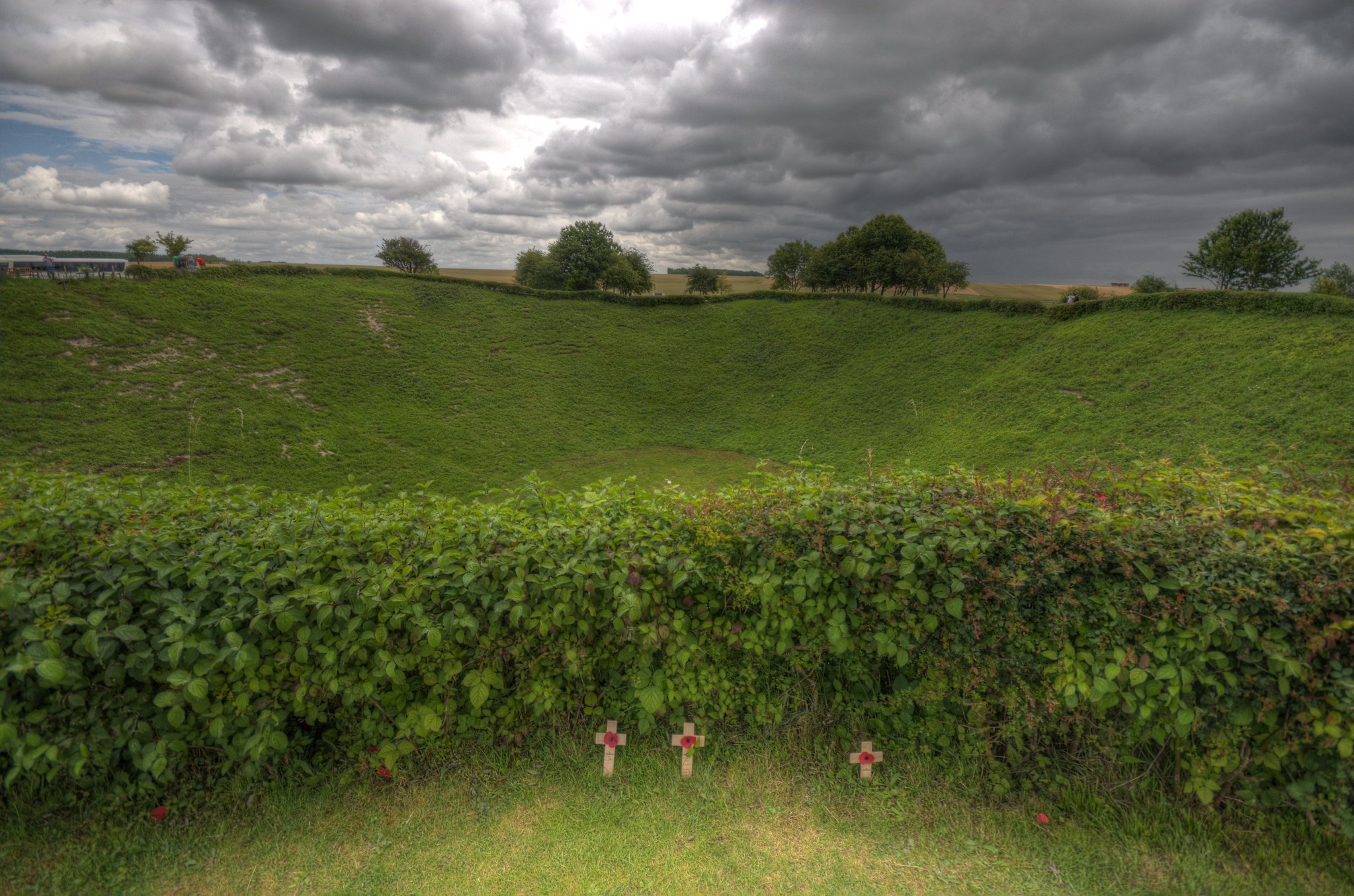 As we were leaving the site, I couldn’t help noticing this WW1 enthusiast’s legs! Now I enjoy a discreet tattoo as much as the next man but this is really something…
As we were leaving the site, I couldn’t help noticing this WW1 enthusiast’s legs! Now I enjoy a discreet tattoo as much as the next man but this is really something…
Anyway, this concludes part 3 of 5 in my WW1 centenary series. Join me and Prince Charles next year as we remember the Third battle of Ypres or “Passchendaele” as it is commonly referred to…
If you missed any of my earlier posts:
Start here with my 2014 visit to Sarajevo
Welcome to the second instalment of my WW1 centenary travel blog – slightly less than a year after my first post in Sarajevo. This time I am visiting the Gallipoli peninsula in Turkey with Neil, Bahar, Mark, Bahar & Clare. It is the 25th of April 1915, exactly 100 years after the first landings here by soldiers from Britain, France, Australia, New Zealand.
As a reminder, by early 1915 most of Europe is at war. The British and French are entrenched on the Western Front and are finding it impossible to make significant advances against the Germans. Thousands of kilometers away in the eastern Mediterranean, the British and French navies attempt to force their way through the Dardanelles to take Constantinople and secure the Bosporus and access to the Black Sea. Their ships got no further than the heavily fortified straights at Canakkale where only a kilometre or so of water separates Europe from Asia. The decision was taken to land troops on the peninsula to neutralise the Turkish forts and to ensure safe passage for the navy.
The landings started just before dawn but, we are not early risers. We managed to catch the ferry to Kilitbahir at about 10:00am, dodging Valletta registered freighters heading for the Sea of Marmara. An enormous sign on the hillside warns “Traveller halt! The soil you tread once witnessed the end of an era”.
Our first stop, was the castle at Kilitbahir where we met a large group of Turkish sightseers from Ankara. This castle has been guarding the entrance to the Dardanelles since 1463 and on the day of our visit was packed with Turkish visitors in holiday mood. Although we were remembering the start of the Gallipoli campaign, that weekend, the rest of the country was celebrating National Sovereignty and Childrens Day.
We were very aware that most of the historic sites were closed to casual visitors like us. Tickets for the remembrance services at ANZAC Cove, Suvla Bay and the other historic sites had been allocated by lottery the previous year. Many thousands of (mostly Australian) pilgrims had been bused in the previous evening, patted down by security guards, and had spent an uncomfortable night on the landing beaches in readiness for the dawn services. Prince Charles & Prince Harry were also in attendance. I suspect that they had not slept on the beach.
We decided that we would leave it until after the official services had finished before driving over to the west of the peninsula. Instead we headed to the magnificent Çanakkale Martyrs’ Memorial at Sehitler Abidesi. It was of course heaving with visitors.
Part of the site is a cemetery and one of the most interesting monuments bears the words of Mustafa Kemal Ataturks famous speech from 1934. The following translation (from the internet) differs very slightly from the one in the picture.
Those heroes that shed their blood and lost their lives. You are now lying in the soil of a friendly country. Therefore rest in peace. There is no difference between the Johnnies and the Mehmets to us where they lie side by side here in this country of ours.
You, the mothers, who sent their sons from far-away countries,
wipe away your tears. Your sons are now lying in our bosom and are in peace. After having lost their lives on this land, they have become our sons as well.
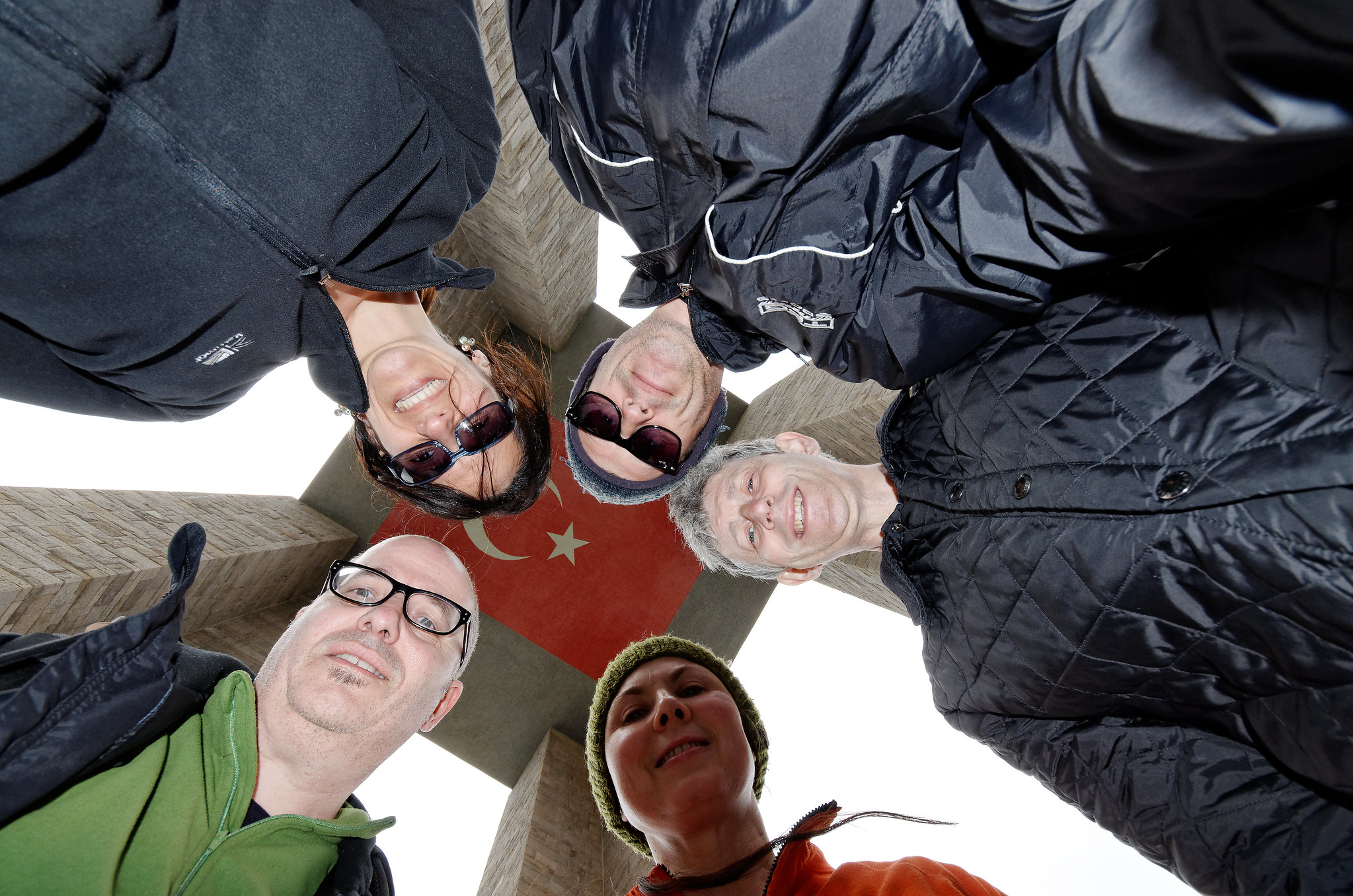 We lined up to take pictures in front of Turkish flags and in front of the beautifully kept graves. We were all Turkish that day, just as we were all Australian.
We lined up to take pictures in front of Turkish flags and in front of the beautifully kept graves. We were all Turkish that day, just as we were all Australian.
After Sehitler Abidesi we headed for the tip of the Gallipoli peninsula, and for the Helles memorial. This obelisk was erected to remember the Commonwealth servicemen who died there and have no known grave. Cape Helles was the site of the British and French landings at the very start of the campaign and is generally acknowledged to have been completely mismanaged by the British commander.
The wall surrounding the monument was engraved with the names of the 20,885 missing but we were looking for just one of them.
W. Hindle was the great uncle of Marie, a school friend of ours and Neil & Mark’s next door neighbor from Addlestone. It didn’t take long for us to find his inscription and affix a rather wilted looking poppy (picked near the beach at Sehitler Abidesi) to the memorial. It was nice to have a name to look for, even though our connection was tenuous.
Looking at the other names on the memorial, we found some Drinkwaters. There were no Cashas.
After Helles we headed north to Eceabat with the idea of crossing the peninsula to take a look at ANZAC cove. The traffic was diabolical with literally hundreds of busses inching their way back from the dawn services to the Çanakkale ferries.
When we eventually got to ANZAC cove it was evening and we had the place to ourselves, that is if you don’t count the hundreds of workers dismantling the seating, tents, video equipment, catering stands etc. As we explored the beach and looked up at the steep hills (cliffs almost), it was not hard to imagine why the ANZACS did not progress much beyond the beach.
I am not sure that this pill box dates from WW1. I would have liked to explore it a bit but, it was beginning to get dark so, stomachs rumbling, we pointed Bahar’s mum’s car back in the direction of the Çanakkale ferry and the end of our Gallipoli adventure.
And, as a bonus for the Turkish speakers among you, here is a short video (not short enough I hear you say) of Neil and Bahar singing a Turkish song commemorating the Çanakkale victory. It is best enjoyed with the volume turned down!
Next stop July 2016 and the centenary of the start of the battle of the Somme….
If you missed my other posts:
Sometime in 1988, not long after joining Kodak Ltd, I was given a tour of the Harrow factory. It was probably during the summer because the tour included Track 5 where colour negative paper was manufactured. In those days the coating tracks operated 24/7 and the summer maintenance period was one of the few occasions when visitors like me could have to have antabuse online a look around. I cannot remember all of the details of that tour but I left the factory that day enormously impressed and very proud to be working for Kodak.
Today, despite an explosion in the number of images being taken, now with telephones rather than cameras, the demand for photographic paper has declined dramatically. The Harrow factory is now owned by Kodak Alaris, who are reducing capacity to match this shrinking demand. Manufacturing will stop in October 2016. It is the end of an era for a factory that has been in operation since 1891, and was once the largest manufacturing facility in the British Empire!
I was keen to take a last look at the factory and take some photographs and Dick Hamer agreed to take me on a tour of the factory where he has worked for the last forty odd years. I spent a few hours with Dick and Richard Scotto, looking around Track 5 and some of the other buildings on the site.
Modern photo paper is made using a polythene coated base. In years gone by, Kodak used to coat the paper base and add the iconic back-print at the Harrow site. Nowadays the paper base is brought in from Germany with the back-print and prednisone online polythene coating already in place. All the factory has to do is to add the appropriate light sensitive emulsions!
Back in 1988 when I first toured the factory I could xanax not imagine how this was done. I half expected to see my colleagues pouring jugs of liquid emulsion onto sheets of paper and spreading it out with squeegees. The reality of course was very different. Paper base passes through the coating track at a speed rather faster than my morning commute, and is turned into photographic paper by the addition of seven or eight different liquid layers. All of this happens in a coating track that is 900 meters long, and that winds its way through an eight storey building in the dark!
Just to give you an idea of scale, a typical parent roll is a bit more that 4 kilometers long and 1.5m wide. One roll could nearly cover the area of a standard soccer pitch. The Track 5 building is actually home to two independent, almost identical tracks: 5/1 and 5/2, which together can coat about nine of these rolls every hour. So, in a twenty four hour period the two tracks coat enough length of parent roll to reach from Harrow to Stuttgart. That is enough paper for 81 million holiday snaps which, in the unlikely event that they were laid end to end, would stretch 12199 kilometers or, all the way from Harrow to Rochester NY and back! In an age when people just want to share their pictures on facebook, Instagram and co, this is just too much capacity!
I am conscious that I am getting carried away and am using far too many exclamation marks in my story!!! Without further ado, let’s take a few deep breaths and take a look at some of the pictures I took.
Because of the route we took through the factory, my photos were not taken in the order in which they would actually occur in the manufacturing process. I am grateful to Andy Church, a colleague of many years and the most knowledgeable person I know on the subject of photo paper manufacturing, for patiently reviewing the pictures with me and helping me to put them in some sort of logical order. Nevertheless, if, you are looking to set up your own paper coating operation, do not use these pictures as guide. Some of them will almost certainly be in the wrong order.
The paper base arrives at the factory from Germany and is stockpiled in a holding area in the parent roll store (Building W173) close to the start of the coating tracks. The rolls each weigh about 1200kg and at this stage are standing upright. They will need to be carefully rotated onto their sides before the coating process starts. Each roll is labelled with the name and surface finish of the product that it will eventually be made into. I had imagined that the surface finish (gloss, lustre, matte or silk) was determined by some treatment during the coating process but it turns out that this happens as part of the resin coating operations in Germany.
Connecting the parent roll store to the start (and finish) of the coating tracks is the so-called trucking tunnel, down which the rolls are transported on their way to and from the manufacturing line. As you approach the start of the line, the lighting level gets gradually dimmer to allow the operators eyes to become accustomed to the darkness that they will be working in during their shift.
Paper rolls are loaded onto an unwinder that holds two rolls. Whilst one roll is unwinding down the track, a second one is made ready and, as the first roll runs out, the second one, all 1200kgs of it, is swung into position and joined to the end of the previous roll. The trailing end of the roll being coated needs to be stopped briefly without slowing down the paper passing the coating point. To achieve this, paper is accumulated between two sets of rollers which swing together like a giant pair of scissors. When the new roll has been spliced successfully, the scissors swing open again to buffer paper for the next change.
As I photographed the winding equipment I remembered that I had my elderly Nikon film camera, loaded with Ektar 100 with me, and I got it out to take a couple of snaps. In this cathedral of all things analog I thought it was somehow fitting to take some “proper photographs”. It was the first time I had used the camera in about 15 years. After each click of the shutter I found myself glancing down at the back of the camera, looking for a screen to check how the picture had turned out! Actually, I had to wait rather more that a week (and spend 30€) to find out how the film images turned out. Here is one of them. I have to admit that I much prefer the digital images!
As the paper approaches the coating station, it runs through a corona discharge unit which bombards the paper surface with streams of electrons. These cause breaks in the polymer chains that make up the polythene coating and provide a much better surface for the emulsion to adhere to.
When Track 5 was built in the 1980s, the emulsion was applied to the paper using a technology known as bead coating. This obsolete method is no longer used but the “Bead Coater” itself, being part of the fabric of the building is still present. The paper web simply bypasses this picturesque piece of history on its way to the much more modern “Curtain Coater”.
The business end of the curtain coater is the “Hopper”. Machined to incredibly tight tolerances out of a massive block of titanium, it’s function is to create a constant cascade of up to eight warm liquid layers, to drop down onto the paper base that is passing underneath. The emulsion layer when dry is only about 6 microns thick (one twentieth of the diameter of a human hair) so you can imagine how thin the individual layers need to be. They are designed with viscosities that prevent them mixing. All of this needs to happen in the absence of air bubbles, impurities, or anything that would jeopardize the homogeneity of the emulsion. It is difficult to imagine that the process actually works – but it does. I have heard that the cost of a hopper is something close to a million dollars. Three Hoppers are shared between tracks 5/1 and 5/2.
During my tour I did not get a good picture of the hopper so I am grateful to Robert Gunsing for letting me use a picture he took during a visit on the same day.
Close to the coating station at the south end of Track 5 are the large emulsion manufacturing areas. This is where the light sensitive emulsions and the liquid dispersions are manufactured according to proprietary recipes that Kodak has developed and refined over the decades.
I will not pretend to understand what I was looking at but (vastly oversimplifying) the process works something like this: Four 3500kg batches of gelatin based, light sensitive emulsion are prepared every 24-hour period. This material is allowed to solidify and is stored until it is needed. At which time it is melted and mixed with a whole variety of secret sauce dispersions – including the dye forming components and interlayers. These coatings are piped to the hopper for immediate use.
After the emulsion is coated onto the paper, the next vitally important step is to ensure that it stays there. Remember that the paper is moving at about 5 meters per second through the track with seven or eight layers of warm liquid wobbling about on its surface. This web runs straight from the coater into a chiller room which takes the temperature right down to almost zero degrees Celsius. The paper runs horizontally over a series of ribbed rollers until the emulsion has solidified sufficiently. Until this happens, needless to say, nothing can touch the emulsion side of the paper otherwise it would leave an impression.
Not long before the end of the track, the paper passes through a laser scanner which examines the surface of the paper for physical defects such as scratches or bubbles. Any defects are logged so that affected portions of the parent roll can be discarded at the finishing stage. One of the many interesting things that I learned during the tour is that the rollers that guide the paper through the coating track, have varying circumferences. This is a massive help in finding the source of cyclical defects because once you have measured the distance between the marks, you can easily work out which roller is the culprit!
Now, at the end of the coating process we have reached the “Reeler”. Think of this as the unwinder in reverse. Here the finished sensitized material is wound back onto a core before being wrapped in lightproof black plastic and taken out through the trucking tunnel to the finished goods store in building W173.
I have mentioned a couple of times that the coating track we toured was Track 5. Tracks 1 & 2 used to be on the west side of the site but production stopped there some years ago and they were demolished. I am not sure what happened to Track 3 (I don’t even know if there ever was a Track 3) but, Track 4 certainly did exist and was used for making photographic film until 2005.
Much of the track has been dismantled but some portions still remain. Dick had a set of keys and was kind enough to take us inside.
When George Eastman chose Harrow to build his first factory outside the USA, he was looking for a site with excellent road and rail access, plenty of room for expansion and an abundant supply of good quality water. There are five wells on the site and Kodak has licenses to withdraw water for use in the manufacturing process. This is one of the five wells – now sealed.
We rounded off our tour of the factory with a visit to the power station and to the engineering workshops where many of the moveable items were labelled with lot numbers for forthcoming auctions. We could have spent days wandering around with our cameras and still not have covered everything. In some ways I wish I had had the presence of mind to start this project 15 years ago. There certainly would have been a lot more to photograph.
Back outside again, this is the view from the roof of Track 5, looking eastwards.
Looking in the opposite direction. The flattened area in the foreground is where Tracks 1 & 2 used to be. Across the road (Harrow View), houses are being built on the site of the old Kodak Recreation Grounds
Although I have never been permanently based at the Harrow site, I have spent quite a lot of time there during various stages of my employment with Kodak. I used to be a regular visitor to the Color Photo Technology building when I worked as a product specialist on high speed printers. Much later I worked with colleagues in the European Graphic Technology Center, and was there when the building was inaugurated by Prince Andrew in June 1991 (I got my picture in Kodak News showing him the Kodak Premier Image Retouching System). The area where these buildings used to stand is now scrubby grassland because it is cheaper to knock buildings down than to pay rates when they are standing empty.
I will not have another occasion to visit the factory before it is decommissioned. If I find myself close to Harrow in years to come, I will probably be unable to avoid the temptation to drive past and see what has happened to the place. It will look very different when the factory buildings are replaced by houses, schools and shops.
James Casha
October 2016